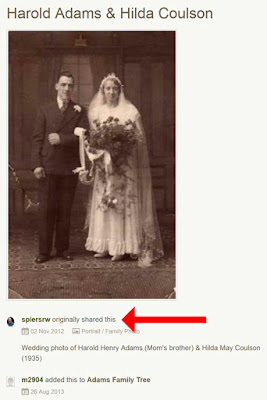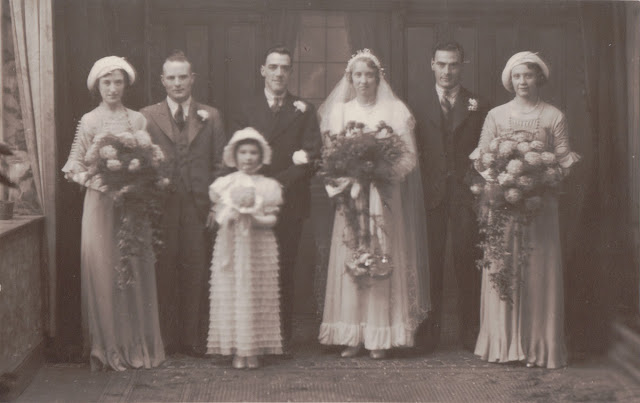Fortunately, there are several organisations for professional genealogists whose members have fulfilled criteria for membership. Membership requirements fall into three categories:
- Ethics
- Assessment by portfolio
- Academic qualification
I will restrict this discussion to organisations in English speaking countries, especially the United Kingdom and United States of America.
Ethics
All the organisations require members to abide by a Code of Ethics, also called codes of practice or conduct. Members who seriously breach the code may be expelled.Ethical conduct is all about trustworthiness. In What clients need to know about Professional Research, Anne Sherman explains the differences between private and professional research, and the duty of the professional to produce quality work under time and cost limitations. Inexperienced researchers may not recognise the limits of their knowledge or ability to complete a project. Dutch genealogist, Yvette Hoitink recently demonstrated ethical behaviour in a Facebook post:
I told a potential client today that she should not hire me. She wanted to prove kinship to a famous Dutch artist based on the same last name. Her own brick wall wasn't even in the Netherlands, and the name is quite common throughout Western Europe. Instead of taking her money on a wild goose chase, I recommended she trace back her own tree first and referred her to a colleague in the other country.
Agreeing to abide by the ethical code is the only membership requirement for the Association of Professional Genealogists (APG). Unlike other bodies, APG welcomes a broad range of genealogy professionals, not just those who undertake research. So, APG does not assess the wide-ranging skills of members. Of the 2169 members currently listed, 391 reside outside the US, spread over the British Isles (168), continental Europe (96), Canada (81), Australia & New Zealand (28) and a thin scatter elsewhere.
Assessment by Portfolio
Certification, accreditation and membership criteria vary. Each organisation has come to different view on what is important and how to assess competence in genealogical research. Membership levels reflect career progression, with certain benefits (e.g. use of logo, membership listing) reserved for 'full' members. As things change, particularly educational opportunities, criteria may be updated. Last year I posted an overview of formal education in Time for Formal Genealogy Education?In the UK, the Association of Genealogists & Researchers in Archives (AGRA) requirements for full membership include: reports sent to paying clients, a research assignment set by AGRA, evidence of continuing professional development, and an interview. The Strathclyde University postgraduate certificate in Genealogical, Palaeographic & Heraldic Studies and the Institute of Heraldic and Genealogical Studied (IGHS) Diploma are deemed to fulfill parts of the requirements, so may be substituted for some of the client reports or research assignment respectively. 102 full members are currently listed.
The Association of Scottish Genealogists & Researchers in Archives (ASGRA) is open to genealogists practicing in Scotland. Requirements for full membership include: a paid client report and 2 other studies, transcriptions set by ASGRA, and a statement of their genealogical business. The postgraduate diplomas from the Universities of Strathclyde and Dundee were recognised in 2013 as fulfilling some requirements. Pre-2013 graduates are required to submit 2 client reports, and post-2013 one client report. One of the reports may have been completed as part of the course. There are 18 full members currently listed.
Accredited Genealogists Ireland (AGI), formerly known as the Association of Professional Genealogists in Ireland (APGI) is open to genealogists who do full time paid genealogical work and reside in the Republic of Ireland or Northern Ireland. Full members may use the post-nominal M.A.G.I. (Member of Accredited Genealogists Ireland). Requirements for full membership, described as accredited include one sample of a client report. Education is advised, but not taken into account in the application. Currently, there are 21 members available to take commissions.
Unlike in the UK, there are no formal genealogical qualifications at postgraduate level in the US, so education plays a different role in the process.
The International Commission for the Accreditation of Professional Genealogists (ICAPGen) divides the US and world into regions and tests applicants on their chosen region. Requirements include prior research experience or education (1000 hours combined), a 4 generation project, 2 written exams and an oral review. Those who successfully complete the process may use the post-nominal A.G. (Accredited Genealogist). Renewal is required every 5 years to ensure the professional's skills remain current. Of the 142 accredited genealogists listed, 105 reside in Utah, 34 in the rest of the US (in 15 states), and 3 in Europe.
Portfolio requirements for certification with the Board for Certification of Genealogists (BCG) include document work (transcription, abstraction, analysis and research planning), client research report, case study (use of evidence), and a narrative kinship determination project. The standards required for submission are published in Genealogy Standards, and the judging criteria for each part of the portfolio is comprehensively documented in the Application Guide. After 5 years certification expires and submission of further work samples is required. Certified genealogists may use the C.G. post-nominal. 218 certified genealogists are listed, of which 213 reside in the US spread over 47 states, 5 live in Canada and 3 in Europe.
In the specialised area of probate research (identification of heirs to estates), the Council for the Advancement of Forensic Genealogy (CAFG) governs the new ForensicGenealogistCredentialed credential, denoted by the post-nominal FGC. Level IV CAGF members are eligible for the credential. Of the 39 members listed, 12 are level IV. Entry requirements (level I) include prior education at 2 approved courses (e.g. institutes, Boston & Washington university short courses), and a work sample. Subsequent levels require further work samples, evidence of continuing professional development, and documented hours of forensic genealogical work. By level IV, a total of 1050 work hours is required.
Academic Qualification
The newest professional genealogy organisation is the Register of Qualified Genealogists (RQG), launched on 10 March 2016. Full members, who may use the post-nominal Q.G., have gained one of the accepted academic qualifications:- University of Strathclyde - MSc or Postgraduate Diploma in Genealogical, Palaeographic and Heraldic Studies
- University of Dundee - MLitt or Postgraduate Diploma in Family and Local History
- Institute of Heraldic and Genealogical Studies - Diploma in Genealogy
These formal qualifications have been benchmarked against Scottish, United Kingdom and European higher education standards and are evaluated at postgraduate level.
Genealogy is a serious academic subject. In QuickLesson 18: Genealogy? In the Academic World? Seriously? Elizabeth Shown Mills made the case for the mutual embrace of genealogy and traditional academia.
Graduates of these courses are experienced researchers because they have conducted considerable practical genealogical research. Karen Cummings describes her experience of the IGHS Diploma and the portfolio she submitted as part of gaining her qualification. I can personally attest to the 5 studies and dissertation I completed for the Strathclyde Postgraduate Diploma, in addition to regular assignments. Dundee graduates tell me the same story.
Conclusion
All these organisations seek to raise standards for the benefit of clients and professionals. Membership of one does not preclude membership of others. Each offers a different blend of benefits in continuing professional development (e.g. webinars, conferences, publications), networking with colleagues and promotion, with a different geographical bias.Anyone who has made a commitment to ethical practice, demonstrated skills by portfolio or gained academic qualifications deserves respect. Those who denigrate the commitment and achievements of professionals act to the detriment of genealogical community. I hope this overview will assist potential clients, and those considering working as genealogists. Below is a summary of where to access information on the organisations discussed:

























